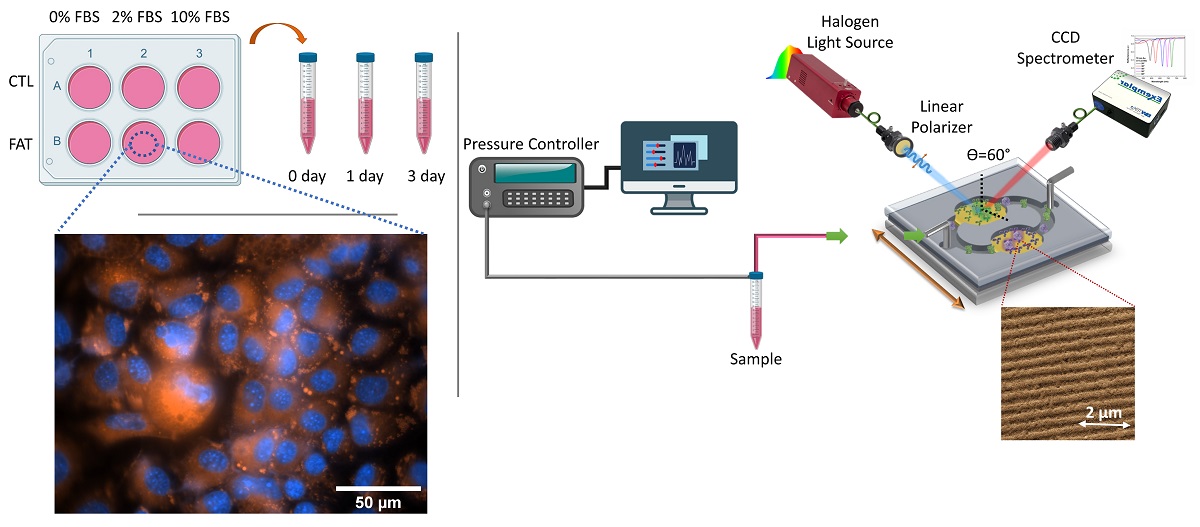Non-alcoholic fatty liver (NAFLD) is a metabolic disorder related with a chronic lipid accumulation within the hepatocytes. This disease is the most common liver disorder worldwide and it is estimated that is present in up to 25% of the world's population. However, the real prevalence of this disease and the associated disorders is unknown mainly because reliable and applicable diagnostic tools are lacking. It is known that the level of albumin, a pleiotropic protein synthetized by hepatocytes, is correlated with the correct function of the liver. The development of a complementary tool that allow the direct, sensitive, and label-free monitoring of albumin secretion in hepatocyte cell culture can provide insight about the mechanism and drugs action in NAFLD. With this aim, we have developed a simple integrated plasmonic biosensor based on gold nanogratings from periodic nanostructures present in commercial Blu-ray optical disc. This sensor allows the direct and label-free monitoring of albumin in a 2D fatty liver disease model under flow conditions using highly specific polyclonal antibody. This technology avoids both the amplification and blocking steps showing a limit of detection within pM range (≈ 0.39 ng/mL). Thanks to this technology, we identified the optimal fetal bovine serum (FBS) concentration to maximize the lipid accumulation within the cells. Moreover, we discovered that at third day from lipids challenge, the hepatocytes increased the amount of albumin secreted. These data demonstrate the ability of hepatocytes to respond to the lipid stimulation releasing more albumin. Further investigation needed to unveil the biological significance of that cell behaviour.

